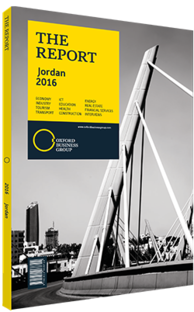Jeppe Jensen, CEO, Aqaba Container Terminal (ACT): Interview

Interview: Jeppe Jensen
How has regional turmoil affected the logistics environment in Jordan?
JEPPE JENSEN: It has had a negative impact on trade because large volumes of Jordanian imports traditionally used to go to Iraq. However, I see the future reopening of the borders as an interesting business opportunity for Jordan as Aqaba has been operating traditionally as a hub for the Levant region. Just a few years ago about 25% of all containers discharged in Aqaba were destined for Iraq. Today, only about 2.5% remain in-transit cargo. Some argue there is a perceived “transfer cost” for those who started using other ports to serve Iraq, but Aqaba is definitely one of the most competitive containerised cargo gateways in the region, especially to serve the western and northern regions of Iraq. If you look at the past two years, the rebels in Iraq have been operating from different areas across the country, and cargo has had to find alternative routes on a monthly basis. With some further investment in Jordan’s strategic logistics infrastructure, Aqaba has the ability to be the most efficient cargo gateway in the long run.
The conflict in Syria has had a different effect on our business. When the borders to Syria closed, the Jordanian exports that used to move by road found themselves stranded with nowhere to go, apart from taking a maritime option. ACT demonstrated its capacity to support the domestic industry in difficult times, as the extra export volumes suddenly came to us in peak season. The maritime corridor has now proven to be a viable alternative for many Jordanian exports heading to destinations previously served by road.
How are the clearing processes of in-transit cargo being improved in Aqaba?
JENSEN: The clearing process is working well but it can always improve further. Part of the information is being handled manually, and this can build many deficiencies into the system, particularly when it comes to border crossing. It can be improved by increasing the effective usage of a single-window system. Not too long ago, all the cargo that was in transit to Iraq was physically inspected by Jordanian Customs. One of the tangible improvements that has already been delivered is that, from now on, all in-transit containers heading for neighbouring countries will only be scanned in Aqaba and let go. Containers will not be opened, which makes the clearance process a lot more efficient and translates into an improvement in the ease of doing business for Jordanian and Iraqi traders. Space at the terminal is very limited, and the only way that we can discharge more volumes is by making sure the containers come out of it at a faster pace. Therefore, we are working on reducing the turnaround time to three to five days maximum.
Where do you envisage investment opportunities to further enhance the logistics chain?
JENSEN: Traders do not look at just some individual elements of the logistics chain; they look at the overall picture. The container port in Jordan runs efficient operations; it is now what comes after the port that requires further investment. Here we are talking about railways and dry ports, which are the mechanisms that will allow Jordan to develop a competitive advantage. All containers today move on long distances by road through trucking activities.
There is a need for more energy-efficient and environmentally friendly alternative modes of transport. If we could have railway links going from Aqaba to the industrial and consumer bases in Amman and use distribution centres from there, Jordan’s logistics value proposition would be much stronger.
It is also strategic for Jordan to develop dry ports. Today we have a spider web of trucks leaving Aqaba and driving in many directions, and almost 90% of them end up in the Greater Amman area. If there was a consolidation base there, together with Customs facilities and inspections processes, it would be a one-stop shop that would make Jordan very attractive to investors.
You have reached the limit of premium articles you can view for free.
Choose from the options below to purchase print or digital editions of our Reports. You can also purchase a website subscription giving you unlimited access to all of our Reports online for 12 months.
If you have already purchased this Report or have a website subscription, please login to continue.

